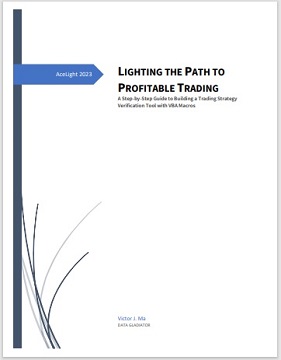Rolling the Dice: Navigating the Wild World of Penny Stock Trading Strategies
|
|
While penny stocks can offer the potential for high returns, it's important
to remember that they can also be a bit like that sketchy food truck you've
been eyeing on the corner of 5th and Main. Sure, the pufferfish might be
delicious, but there's also a chance you'll end up with a serious case of
food poisoning. Likewise, penny stocks can be an enticing investment option,
but there's always a risk that you'll end up regretting your decision. So,
before you jump into the world of penny stock trading, be sure to do your
research and proceed with caution. And maybe steer clear of that food truck
while you're at it.
Introduction
Penny stocks are stocks of
small companies that trade at a low price, usually below $5 per share. These
stocks are often traded on over-the-counter (OTC) markets or on smaller
stock exchanges. Penny stocks are typically issued by companies with a low
market capitalization and may have limited liquidity, meaning there may be a
limited number of buyers and sellers for these stocks. Due to their low
price and high volatility, penny stocks are considered high-risk investments
and are subject to manipulation by unscrupulous individuals or groups.
While penny stocks offer the potential for significant gains, they are
also considered high-risk investments due to their low liquidity, lack of
financial reporting, and susceptibility to manipulation. As such, penny
stock trading requires a unique set of strategies that differ from
traditional stock trading methods. This blog explores the various penny
stock trading strategies used by traders and investors to generate profits
in the penny stock market.
Fundamental Analysis
One of the
most common strategies used in penny stock trading is fundamental analysis.
This involves evaluating a company's financial and operational data, such as
revenue, earnings, debt, and management, to determine its underlying value.
Fundamental analysis aims to identify undervalued or overvalued stocks and
provides traders with a basis for making investment decisions.
Technical Analysis
Technical analysis is another popular strategy
used in penny stock trading. This involves analyzing charts and graphs of a
stock's price and volume to identify patterns and trends. Technical analysis
is used to predict future price movements and is often used in combination
with fundamental analysis to provide a more comprehensive view of a
company's potential for growth.
Swing Trading
Swing trading is
a strategy that involves buying and holding a stock for a short period,
usually a few days to a few weeks. Swing traders aim to capture short-term
price movements and profit from market fluctuations. This strategy requires
traders to have a good understanding of technical analysis and to be able to
identify entry and exit points.
Day Trading
Day trading is a
strategy that involves buying and selling stocks within the same trading
day. Day traders aim to capitalize on intraday price movements and often
rely on technical analysis to identify opportunities. This strategy requires
traders to be disciplined, knowledgeable, and able to react quickly to
market changes.
Momentum Trading
Momentum trading is a
strategy that involves buying stocks that are trending upwards and selling
stocks that are trending downwards. Momentum traders aim to capture price
movements driven by market momentum and often rely on technical analysis to
identify trends. This strategy requires traders to have a good understanding
of market psychology and to be able to identify trends early.
Scalping
Scalping is a strategy that involves buying and selling
stocks within seconds or minutes. Scalpers aim to profit from small price
movements and often rely on technical analysis to identify entry and exit
points. This strategy requires traders to have a good understanding of
market liquidity and to be able to execute trades quickly.
Penny
stock trading can offer potential rewards for traders who are willing to
take on a high degree of risk. However, it is important to consider both the
pros and cons of penny stock trading before deciding whether to invest in
this type of market.
Pros:
1. Potential for High Returns: Penny
stocks are often issued by small, relatively unknown companies that may have
the potential for significant growth. If a company's fortunes improve, the
stock price can increase dramatically, offering the potential for high
returns.
2. Low Entry Cost: The low price per share of penny stocks makes
them an attractive investment option for traders who have limited funds to
invest.
3. Opportunity for Short-Term Profits: Penny stocks can be highly
volatile, which can offer opportunities for traders to make short-term
profits.
4. Diversification: Adding penny stocks to a portfolio can offer
diversification benefits, as these stocks often have little correlation with
traditional stocks.
Cons:
1. High Risk: Penny stocks are highly
speculative and carry a high degree of risk. Many penny stocks are issued by
companies with little to no financial history, making it difficult to assess
their long-term prospects.
2. Lack of Regulation: Penny stocks are often
traded on less regulated markets and exchanges, making them susceptible to
price manipulation and fraud.
3. Low Liquidity: Penny stocks can be
illiquid, meaning there may be a limited number of buyers and sellers for
these stocks. This can make it difficult to buy and sell shares at a desired
price.
4. Lack of Information: Many penny stocks do not have the same
level of financial reporting requirements as larger companies, making it
difficult for traders to make informed investment decisions.
There is
no guaranteed way to completely eliminate the risks associated with penny
stock trading, but there are several strategies that can help reduce the
risks and increase the chances of success. Back-testing can be one such
strategy that can help reduce the risk of penny stock trading.
 Back-testing
involves analyzing past market data to identify patterns and trends that can
help predict future market movements. This can help traders make more
informed decisions about when to buy or sell penny stocks, and can help
reduce the risk of making impulsive or emotionally driven trading decisions.
For more details, click on
LIGHTING THE PATH TO PROFITABLE TRADING: A Step-by-Step Guide to Building a Trading Strategy Verification Tool with VBA Macros to get the whole tutorial handbook for free! Back-testing
involves analyzing past market data to identify patterns and trends that can
help predict future market movements. This can help traders make more
informed decisions about when to buy or sell penny stocks, and can help
reduce the risk of making impulsive or emotionally driven trading decisions.
For more details, click on
LIGHTING THE PATH TO PROFITABLE TRADING: A Step-by-Step Guide to Building a Trading Strategy Verification Tool with VBA Macros to get the whole tutorial handbook for free!
Here are a few other strategies that can help reduce the risk
of trading penny stocks:
1. Do your research: It's important to
thoroughly research the companies behind the penny stocks you're interested
in before investing. Look at financial statements, company news, and other
relevant information to get a better sense of the company's long-term
prospects.
2. Set realistic goals: Have a clear idea of what you hope to
achieve with your penny stock trades, and set realistic goals based on your
available resources and risk tolerance.
3. Diversify your portfolio:
Don't put all your eggs in one basket. Consider diversifying your portfolio
by investing in a variety of stocks and other investment vehicles.
4. Use
stop-loss orders: Stop-loss orders can help protect your investments by
automatically triggering a sale if the stock drops below a certain price.
5. Avoid hype and emotion-driven decisions: Don't let hype and excitement
cloud your judgment. Stick to your trading plan and avoid making impulsive
or emotionally-driven decisions.
In conclusion, penny stock trading
can be a rollercoaster ride of excitement and uncertainty, kind of like
bungee jumping with a rubber band you found on the ground. It's not for the
faint of heart or those who are prone to motion sickness. But, if you're
willing to take the risk and have a sense of humor about it all, you might
just come out on top. Just don't forget to wear your lucky socks and carry a
rabbit's foot for good measure. And if all else fails, you can always use
those penny stocks to build a small fort in your backyard. Who says
investing can't be fun?
And click Free Trial to download strategies testing tools, all for a 30-day Free Trial.
Click on Subscription to order more strategies testing tools to help your stock trading.
|


|

Free Tutorial
Share
|
|
|
|